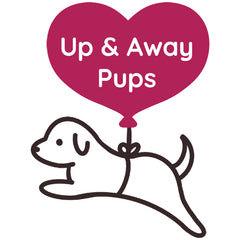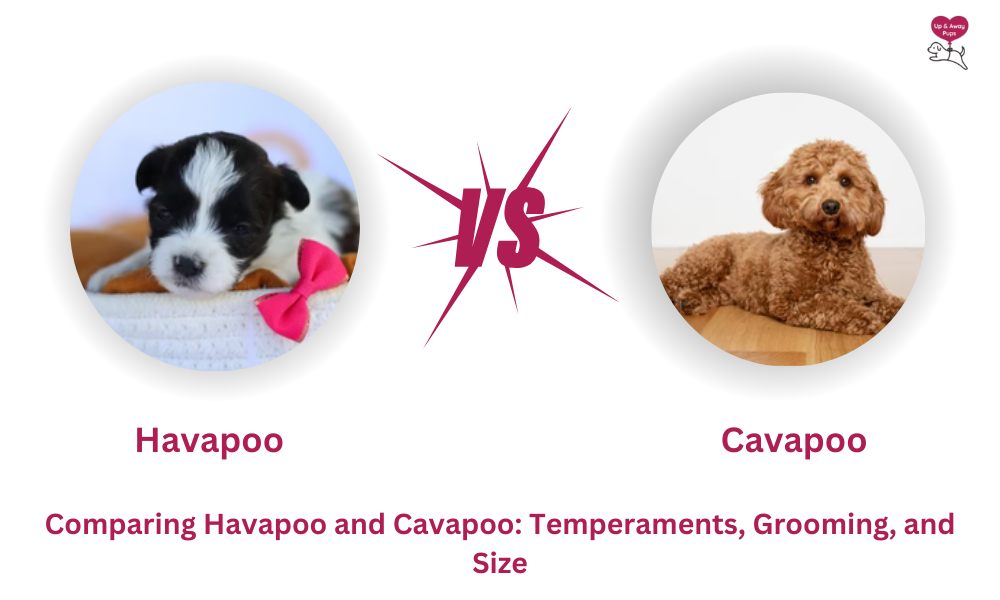Comparing Havapoo and Cavapoo: Temperaments, Grooming, and Size
Havapoos and Cavapoos are affectionate, intelligent designer breeds ideal for families or individuals. This guide compares their size, temperament, grooming needs, energy levels, and health to help you choose the right fit. While Havapoos are more energetic and playful, Cavapoos are calmer and gentler. Both offer loyal companionship and thrive in loving, attentive households.
There has been a growing interest in smaller designer dog breeds lately, especially by families and people looking for a cute companion that adjusts well to any size home. Perhaps due to this flexible adaptability, the Havapoo and Cavapoo breeds have been gaining quite a bit of popularity.
They come from gentle, kind, and very intelligent parents, which is the reason for their wonderful, loving and playful character. It also explains why these pet parents are so happy and delighted with their playful personalities.
Due to their equally playful and loving dynamics, both dog breeds have provided pet parents with a number of equally wonderful characteristics, like smaller size, good temperament, and easy-to-manage grooming. This also makes them highly appealing to people with all sorts of lifestyles. It is for these reasons that this article will go into specific detail about the Havapoo and Cavapoo breeds so that potential owners can make an informed decision.
Havapoo vs Cavapoo: History & Origins
First off, let’s talk about how adorable Havapoos are. They are cross-bred puppies between a Cuban Havanese and a most trainable, intelligent Poodle. The Poodle's Havanese’s charm captivates the owners, while the Poodle's mind and low-shedding coat are a bonus. The Poodle’s Havanese, a devoted companion with the silkiest coat, which was centuries ago recognized as Cuba’s national dog, retains its charm.
On the other hand, the Cavapoo comes from a mix of Poodle and Cavalier King Charles Spaniel. The Poodle descendant Cavapoo is recognized for its balanced coat from both parents and great pedigree. The King Charles Cavalier is a soft, gentle aristocrat dubbed as the English nobility and royal lap dog, Poodle side.
In the last 20 years, both Havapoos and Cavapoos have gained attention as designer breeds. These breeds were made for pet lovers who want to avoid shedding. Both breeds, provided in equal measure, offer energetic, loyal, and warm companionship.
Pet lovers often wonder how these two breeds differ, especially when living together in daily life. Exploring the core qualities, including their grooming needs, temperament, and sizes, effectively helped clarify the traits that set them apart. In the following sections, we will highlight the core differences and similarities that are most significant.
Temperament Differences in Home Life
Havapoos are usually bubbly in character. They are attention seekers and establish a good relationship with family members. It is due to their Havanese heritage that they are faithful companions who enjoy following their humans around the house. Knowledge of Teacup Havapoo dos and don'ts can help pet owners understand the smallest differences, which exhibit the same affectionate and loving nature, albeit requiring more gentle treatment due to their delicate structure. They are playful, yet can also easily relax during quiet times, providing a balance for families or individuals who desire it.
Cavapoos usually have a milder and gentler nature. They have the sweet temperament of the Cavalier King Charles Spaniel, which may make them more empathetic to human feelings. They are support or therapy pets; they are fun and comforting. They are playful, but tend to have a more relaxed attitude than the more energetic Havapoo.
Grooming Requirements and Coat Care
Havapoos come in various coat types, which depend on the inheritance of the Havanese or the Poodle. Their hair is usually wavy or curly, and it requires regular brushing to prevent knots. To maintain the coats, professional grooming is done every six or eight weeks. Their hypoallergenic nature appeals to families with slight allergies, but none of the dogs is totally free of allergens. The American Kennel Club (AKC) states that in the United States, more than 10% of the population is allergic to pets, which is why regular coat care and grooming are a significant consideration in the homes of individuals with allergies.
Cavapoos are also pets that require regular grooming due to their curly or wavy hair. Their hairiness is typically determined by the type of Poodle used in breeding. Home brushing minimizes matting, and professional grooming keeps things tidy. The Cavalier side of Cavapoos causes them to have a more silky coat than Havapoos, and they are prone to knots if not well taken care of. Both breeds require owners who will take care of their coats.
Differences in Size and Build
Havapoos are generally small to medium in size, weighing between 7 and 20 pounds, depending on the size of the parents they inherit. Their stature typically ranges from 8 to 15 inches in height. They have a durable yet compact structure that renders them well-suited for living in apartments or houses with limited yard space. Their adjustability enables them to adapt to most lifestyles with ease, particularly when combined with careful instructions in Cavapoo training and feeding, which ensures they develop well and maintain a controlled weight.
Cavapoos are slightly larger and typically weigh between 9 and 25 pounds on average. They have a height between 9 and 16 inches, making them appear marginally taller and slimmer. This dissimilarity is largely due to the Cavalier tradition that influences their frame. Although contained in apartments, Cavapoos may prefer larger homes where they can engage in light activities and play.
Energy Levels and Exercise Needs
Havapoos typically exhibit a moderate level of energy. They love playful intervals, particularly the interactive activities such as fetch or puzzles. They feel happy taking walks every day and also appreciate a little mental stimulation. However, they are also satisfied with cuddling up next to family members after they have met their exercise requirements.
According to the Association for Pet Obesity Prevention, nearly 59% of dogs in the United States are overweight or obese, highlighting the importance of regular activity and a balanced diet for small dogs, such as the Havapoo. This equilibrium makes them suitable for both active families and individuals who prefer to relax.
Cavapoos typically have lower energy requirements, but they still require frequent walks and brief play periods. They are more satisfied with lounging by their Cavalier side, although their Poodle origin makes them enjoy the benefits of stimulation. Cavapoos are often a good fit for families with average activity levels, as they do not require excessive physical exercise.
Training Ease and Intelligence Levels
The Poodle parent has bestowed on Havapoos the sharp wit of the Poodle, and they learn fast. They are receptive to regular training approaches that are reward-based. They are also trainable, and they are eager to please, but they might have some stubborn tendencies on the side of the Havanese.
Early socialization enables them to adapt to diverse environments and interact effectively with individuals. In comparison with Cavapoo and Cockapoo, a lot of owners can observe the same indices of intelligence and readiness to interact, which is a strong impact of the Poodle in all these crossbreeds.
Cavapoos are also relatively easy to train because they are intelligent Poodles. They tend to be more receptive to different learning styles, and therefore, they can be more patient and encouraging. Cavapoos are seldom defiant, and their natural sensitivity is counterproductive to harsh methods. They are cooperative and respond well to obedience training when families use positive reinforcement.
Compatibility with Families and Children
Havapoos are quick to adapt to family life and are affectionate towards children and other pets. Their spirited nature makes them a good play, and their loving nature enables them to form strong, close relationships. Very young children are often advised to be under supervision due to their small size, but by and large, they are well-behaved in a lively household.
Cavapoos are also gentle dogs, making them excellent family pets. They have a close relationship with children who are patient and kind. The fact that their temperament is calmer can suit families with younger kids or older people, as they will not be overwhelming with their energy. The two breeds fit well in households where the amount of love and attention is high.
Health Outlook and Life Expectancy
The Havapoos are usually healthy, benefiting from hybrid vigor, but can carry gene-related problems such as hip dysplasia and eye issues typical of their parent breeds. It can have a lifespan of 12-15 years and serve as a long companion, provided it receives proper care and regular veterinary checkups.
The lifespan of Cavapoos is also healthy, ranging from 12 to 15 years. The possible health issues include heart diseases passed down to the cavalier side, as well as ear infections due to their floppy ears. Regular check-ups and preventive measures help maintain good health and contribute to a long and happy life. Screenings are a primary concern for responsible breeders, as they aim to minimize genetic risks in both breeds.
Conclusion
Havapoo and Cavapoo are both joyful, loving, and friendly to homes that need a small and designer dog. The variation in energy levels, coat texture, and temperament suggests that families must critically evaluate which one best fits their lifestyle.
Grooming commitment, preference for activity, and household dynamics also play important roles in the decision. The two breeds ultimately come down to a matter of personal preference, but either one will provide years of love and devotion from a loyal dog companion.


